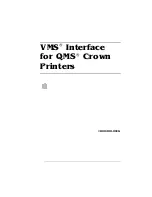
mysql_convert_table_format
— Convert Tables to Use a Given Storage Engine
364
This command edits the specified instance's configuration section to change or add instance options.
The option is added to the section is it is not already present. Otherwise, the new setting replaces the
existing one.
mysql>
SET mysqld2.port=3322;
Query OK, 0 rows affected (0.00 sec)
Changes made to the configuration file do not take effect until the MySQL server is restarted. In
addition, these changes are not stored in the instance manager's local cache of instance settings
until a
FLUSH INSTANCES
command is executed.
•
UNSET instance_name.option_name
This command removes an option from an instance's configuration section.
mysql>
UNSET mysqld2.port;
Query OK, 0 rows affected (0.00 sec)
Changes made to the configuration file do not take effect until the MySQL server is restarted. In
addition, these changes are not stored in the instance manager's local cache of instance settings
until a
FLUSH INSTANCES
command is executed.
•
FLUSH INSTANCES
This command forces Instance Manager reread the configuration file and to refresh internal
structures. This command should be performed after editing the configuration file. The command
does not restart instances.
mysql>
FLUSH INSTANCES;
Query OK, 0 rows affected (0.04 sec)
FLUSH INSTANCES
is deprecated and will be removed in MySQL 5.2.
4.6.11.
mysql_convert_table_format
— Convert Tables to Use a Given
Storage Engine
mysql_convert_table_format
converts the tables in a database to use a particular storage engine
(
MyISAM
by default).
mysql_convert_table_format
is written in Perl and requires that the
DBI
and
DBD::mysql
Perl modules be installed (see
Section 2.22, “Perl Installation Notes”
).
Invoke
mysql_convert_table_format
like this:
shell>
mysql_convert_table_format [options]db_name
The
db_name
argument indicates the database containing the tables to be converted.
mysql_convert_table_format
supports the options described in the following list.
•
--help
[364]
Display a help message and exit.
•
--force
[364]
Continue even if errors occur.
•
--host=host_name
[364]
Connect to the MySQL server on the given host.
•
--password=password
[364]
Summary of Contents for 5.0
Page 1: ...MySQL 5 0 Reference Manual ...
Page 18: ...xviii ...
Page 60: ...40 ...
Page 396: ...376 ...
Page 578: ...558 ...
Page 636: ...616 ...
Page 844: ...824 ...
Page 1234: ...1214 ...
Page 1427: ...MySQL Proxy Scripting 1407 ...
Page 1734: ...1714 ...
Page 1752: ...1732 ...
Page 1783: ...Configuring Connector ODBC 1763 ...
Page 1793: ...Connector ODBC Examples 1773 ...
Page 1839: ...Connector Net Installation 1819 2 You must choose the type of installation to perform ...
Page 2850: ...2830 ...
Page 2854: ...2834 ...
Page 2928: ...2908 ...
Page 3000: ...2980 ...
Page 3122: ...3102 ...
Page 3126: ...3106 ...
Page 3174: ...3154 ...
Page 3232: ...3212 ...
















































